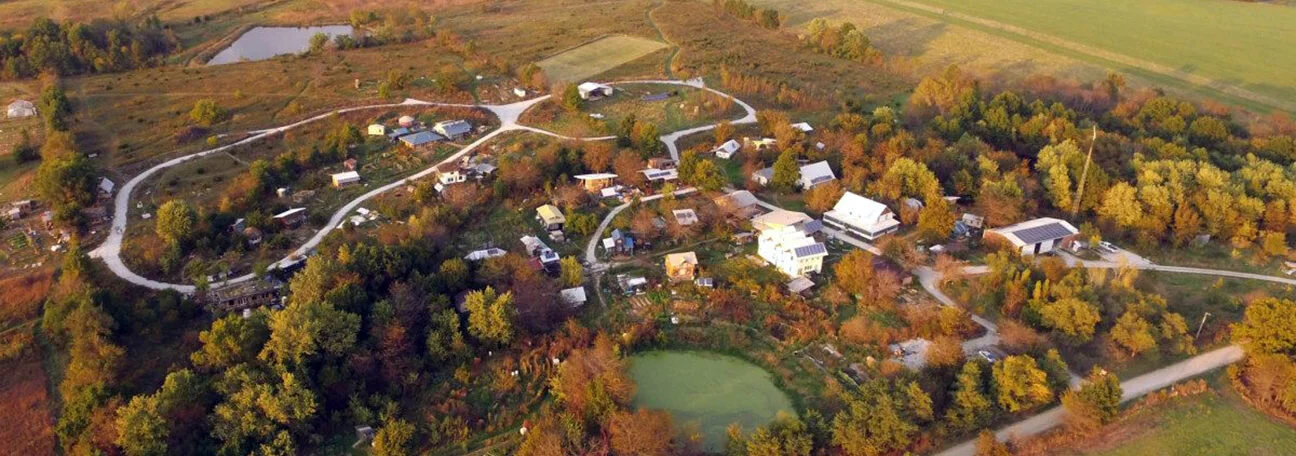The Making of a Radical
As a child, visions of floor plans danced in my head…. I attended architecture school in college, only to discover that my need for tactile assimilation of knowledge was too great to pursue a career as an architect.
In the process, I also became disenchanted with the construction industry.
I have never been able to escape a gnawing feeling that often-times, human intervention degrades landscapes rather than enhances them. I have always longed to be part of that second group, wherever it was.
Natural Building
In the late 90’s, I stumbled upon the work of an architect named Michael Reynolds of Earthship Biotecture, and discovered an entire world I never knew existed. His 3 book compendium opened my eyes on how to envision building every aspect of a structure sustainably and responsibly.
The Nautilus in Taos, NM
Earthship Biotecture
By 2003, I’d uprooted my family – husband, 3 small kids – to journey across the country in search of sustainable architecture. What I discovered was an architectural building style that was playful, creative, fun, and joyful.
Dancing Rabbit Ecovillage
Natural building awakened the dormant passion I had for architecture, and led me to a very rural part of Northeast Missouri. Dancing Rabbit Ecovillage was young, only 8 years into their village development when I arrived; boasting 18 residents and a dozen structures dotting a degraded farm landscape.
For eleven years, I worked, lived, and played alongside a group of passionate folks dedicated to demonstrating sustainable and cooperative culture at the village scale. We cooperatively managed every aspect of town life, developing governance structures, and refining ecological systems and methods for living lightly on the earth in a continually growing community.
April and Ziggy pose for the cover of Yes magazine amid their cob house.
Living Lightly
The results were profound:
The average Dancing Rabbit resident uses 90% less fossil fuels, electricity, and water
and creates 90% less waste than the average American,
and ecovillage residents consistently report a higher degree of happiness than most Americans.
This ecovillage demonstrates that a radical paradigm shift is possible when we align our goals and work together.
For me, Dancing Rabbit was a sustainable architecture playground.
In a single setting, there are dozens of examples of natural buildings, many of which my hands played a part in creating. With zero building codes in the county, people were free to build with reclaimed lumber, round timbers, earth, straw, clay, and lime. Cattail fluff, cow dung, and wild grasses were included in our materials palette, as were a smattering of industrial waste-stream materials.
At present, over 60 structures, many of them uniquely beautiful examples of sustainable architecture, dot this pedestrian-driven regenerative landscape.
Interestingly, in all my years traveling and living at Dancing Rabbit, surrounded by natural building, I never happened upon hempcrete until recently. This is because hemp was illegal to grow until 2018, and a foundational principle of natural building is to utilize what is local, renewable, and abundant.
Radical
Natural Building is living lightly. It’s radical only because we’ve moved away from agricultural processes in favor of technological and petrochemical ones. But it doesn’t have to be this way. Natural materials are smart; they meet or exceed building performance criteria without degrading the earth.
Jacob Racusin, Chris Magwood and Ace McArleton deliver a dual standing ovation NESEA Keynote.
In early 2019, 3 well respected design/builders gave the keynote speech at the Northeast Sustainable Energy Association’s annual Boston conference.
Their message was clear.
As leaders in the building industry, we can’t keep doing what we have been doing and expect to get to the level of carbon reduction that we need. We must look beyond operational carbon and crack the embodied carbon nut.
The good news is that we can, and it’s not nearly as hard as we think. And more importantly, the time is NOW. The presentation was titled Carbon Drawdown NOW, and is well worth a watch. I’ll tell you a little secret. All 3 of the keynote speakers Ace, Jacob, and Chris are natural builders. Like me. I realized during that presentation that natural building materials are about to have their shining moment in history once again.
Inspired and reinvigorated, I decided to dedicate my time to bringing natural building materials to the building industry.
I understand the challenges and opportunities of natural building materials and methods. In order to infiltrate the construction market, we need carbon-positive materials that can be used at scale, adapt to a wide-range of environmental conditions, and protect both the structure and its inhabitants.
Tom Rossmassler, HempStone’s Chief Embodied Officer
Natural Building at Scale
All signs pointed to hemp bio-composites. I began immersing myself in hempcrete, drawing from my experience of other natural materials.
I was thrilled to discover that lime plaster – my favorite natural finish – is perfectly suited for use with hempcrete.
I met Tom Rossmassler, joined HempStone, and the rest, as they say, is written on our blog!
Our partnership is founded on RADICAL ideals:
RADICAL is directive to live life with Responsibility and Accountability, to be Disruptive and Inclusive, to Co-create, and be Abundant and Loving.
While I remain a stalwart natural builder – preferring to use local, renewable, abundant materials exclusively – I’ve become a champion for hemp as THE upcoming building material of our time.
Tom and I have joined forces for good with the US Hemp Building Association, whose mission is to support the development of a hemp building industry. Our national organization of professional members work collaboratively to radically catalyze change the way we build.






